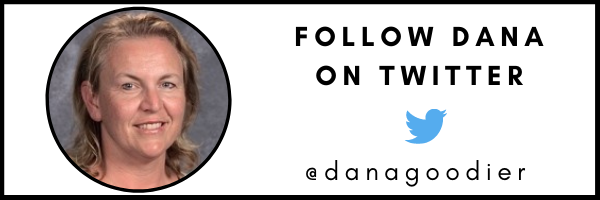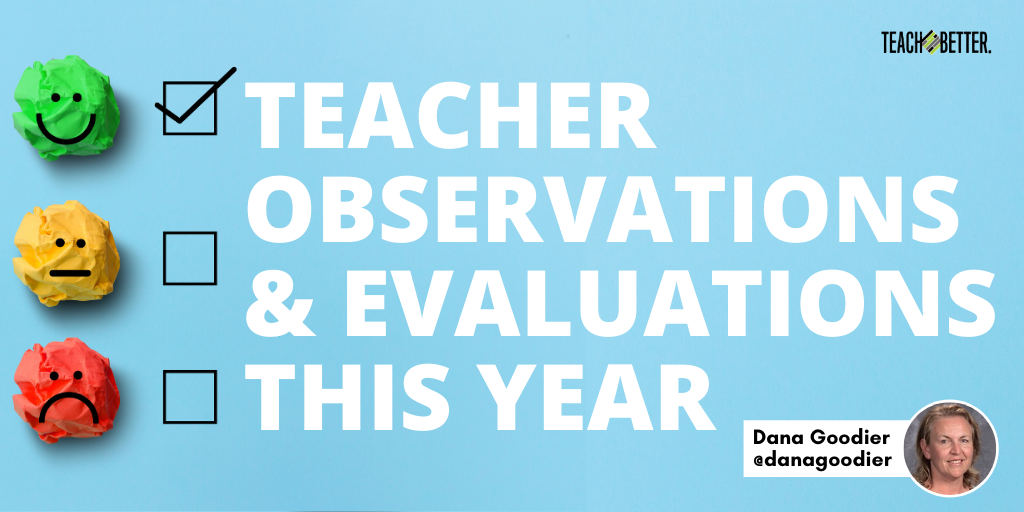TL;DR:
- We need to consider how teacher observations and evaluations can look different this year since schools are hybrid or remote.
- There are benefits to visiting 500 classrooms in one year like building connections and informal observations.
- The purpose of teacher observations and evaluations is to promote teacher growth.
The other day, I had a great conversation with Chris Dodge, a K-6 principal in Massachusetts, for my podcast, Out of the Trenches (the episode will be out in a few months). Our conversation focused on ways to observe and evaluate teachers and other staff in the remote learning environment. This is something all administrators have been trying to figure out on their own this year. Most administrators have used the same district evaluation tool but adjusted observations for virtual teachers.
The question here is, are we really observing and should we be evaluating our teachers this year? For districts that have been hybrid or full in-person, there has been an opportunity for administrators to physically go into the classroom to observe teachers. Having said that, it still doesn’t look the same way as pre-pandemic. Administrators must limit their time spent around multiple groups of students as to avoid possible COVID exposure and quarantine. Thus, we aren’t able to visit classrooms as we have in the past.
True leadership involves becoming familiar with teacher practice and you and the teacher learning from each other. Click To Tweet
500 Classrooms a Year
Three years ago, I “jumped on the bandwagon” of visiting #500classrooms a year after completing the Principal Center’s High Performance Instructional Leadership Certification. This program was a follow-up to the principal licensure program. It was a master’s level certification program to become a principal in Colorado. Much has changed in terms of teacher observation and evaluation since I started that program in 2009.
The concept of getting into 500 classrooms a year enables an administrator to take on the mindset that whatever comes up in terms of office paperwork (something that will always be there) can wait. The administrator spends 90 minutes a day visiting classrooms. That way, they can “take the pulse” of the classroom, connect with students, and be a “fly on the wall” during a lesson, without this being a formal observation. There were connections made with students pre-pandemic. This method of making a point of visiting 12-15 classrooms a week led me to become a better leader. And it’s a culture changer.
Beyond Observations and Evaluations
This brings us to this year. In my conversation with Chris Dodge, we discussed how he’s joined his teachers’ virtual classrooms on a regular basis. He keeps his camera off to not attract attention towards himself. Instead of having observations in the evaluative sense, he uses the Danielson Framework for Remote Learning Walks in his coaching conversations with staff. He and his deans collect evidence from those virtual walks. Teachers are also able to submit artifacts from their online lessons. For example, student work and collaborative tasks are accepted as part of their evaluation portfolio.
[scroll down to keep reading]
Promote Teacher Growth
Along with your coaching walks, whatever observations and evaluations you choose to use, make sure they are promoting teacher growth. You don’t want to end the school year just filling out a checklist on teachers you evaluate. True leadership involves becoming familiar with teacher practice and you and the teacher learning from each other.
It may be a while before teacher observations and evaluations look anything like they did pre-pandemic. Let’s try to make this year not a “got ya” year, but rather a year of conversations, reflections, and coaching opportunities with our teachers and staff.
About Dana Goodier
Dr. Dana Goodier has 20 years of experience in education. She has taught World Languages and English and worked as a middle school administrator. She completed her doctorate degree (Ed.D.) in Educational Leadership early 2020. For her dissertation, she researched reasons parents were opting their students out of high-stakes testing at middle schools and how that affected the district accreditation rating. She often speaks at conferences, providing educators with techniques to minimize off-task behavior and to increase time on task. She is the host of the “Out of the Trenches” podcast, which features educators who share their stories of resiliency. Follow her on Twitter @danagoodier and visit her website at: www.danagoodier.com



